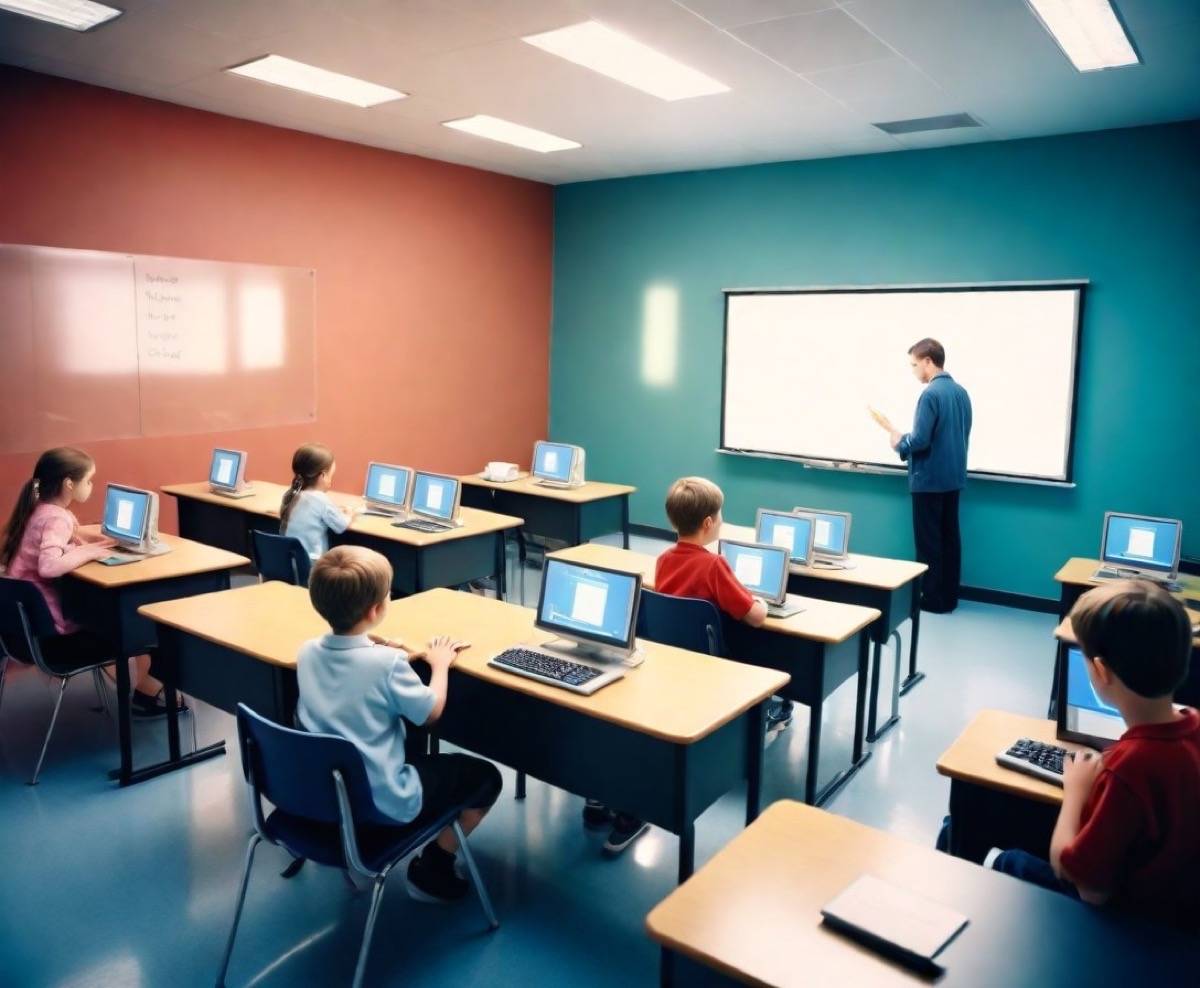Discover how traditional and digital education can be blended effectively in today’s educational landscape. Enhance student engagement, cater to diverse learning styles, and prepare students for success in the digital age.
In today’s rapidly evolving educational landscape, it is imperative to explore alternative approaches to teaching and learning that effectively integrate traditional and digital education. The convergence of traditional face-to-face instruction and technology-based learning platforms presents an opportunity to enhance student engagement and cater to diverse learning styles. By harnessing the power of technology while retaining the strengths of traditional pedagogy, educators can create a blended learning environment that maximizes student outcomes and prepares them for success in the digital age.
Integration of Traditional and Digital Resources
In today’s modern educational landscape, the integration of traditional and digital resources plays a crucial role in enhancing learning experiences for students. By combining the strengths of textbooks and online resources, educators have the opportunity to create a well-rounded and comprehensive learning environment.
Use of textbooks and online resources together
Textbooks have long been a staple in classrooms, providing students with a tangible and reliable source of information. However, relying solely on textbooks can limit the depth of knowledge and engagement that students can achieve. By integrating online resources, such as e-books, interactive websites, and video tutorials, educators can supplement the content found in textbooks and provide additional resources for students to explore.
Incorporation of multimedia content in traditional classrooms
Incorporating multimedia content in traditional classrooms can greatly enhance the learning experience. Videos, images, and audio clips can be used to introduce new concepts, engage students in discussions, and provide real-world examples. Multimedia resources are particularly beneficial in subjects that require visual and auditory engagement, such as science and history. By blending traditional teaching methods with multimedia content, educators can create an immersive and dynamic learning environment that caters to diverse learning styles.
Flexible Learning Approaches
The changing landscape of education calls for flexible learning approaches that cater to the individual needs and preferences of students. Two popular approaches that blend traditional and digital education are flipped classrooms and hybrid learning models.
Flipped classrooms
In a flipped classroom model, the traditional learning sequence is flipped. Students are assigned content to review independently outside the classroom, such as reading materials or instructional videos. Classroom time is then used for engaging activities, discussions, and collaborative projects. This approach allows students to learn at their own pace using digital resources, while classroom time is maximized for active learning and teacher-guided support.
Hybrid learning models
Hybrid learning models combine both face-to-face and online learning experiences. In a hybrid classroom, students have the opportunity to engage in interactive online activities and collaborate with peers through digital platforms. Teachers can use online resources to deliver content, assign tasks and assessments, and provide feedback. This blended approach provides flexibility in terms of time, place, and pace of learning, accommodating students’ individual schedules and learning preferences.
Personalized Learning
One of the key advantages of blending traditional and digital education is the ability to personalize learning experiences for students. By leveraging digital tools and tailoring traditional teaching methods, educators can meet the unique needs and interests of each learner.
Adapting digital tools to individual student needs
Digital tools offer a wealth of opportunities for personalization. Adaptive learning platforms can tailor content and assessments based on a student’s strengths, weaknesses, and learning style. Virtual reality and augmented reality technologies allow students to explore complex concepts in a hands-on and immersive manner. By incorporating these tools into the classroom, educators can deliver personalized learning experiences that foster independent thinking and problem-solving skills.
Tailoring traditional teaching methods for student engagement
Traditional teaching methods can also be personalized to increase engagement and cater to diverse learners. For example, teachers can use small group discussions to encourage peer-to-peer interaction and collaboration. By giving students the opportunity to work together, share ideas, and learn from one another, educators can foster a sense of community and create a supportive learning environment. Additionally, teachers can incorporate project-based learning and real-world applications of knowledge to make learning more relevant and meaningful for students.
Teacher Training and Support
As education continues to evolve, it is essential to provide teachers with the necessary training and support to effectively blend traditional and digital resources in their classrooms.
Providing professional development opportunities
Offering professional development opportunities is crucial in ensuring that educators have the knowledge and skills to integrate technology seamlessly into their teaching practices. Workshops, conferences, and online courses can help teachers become familiar with various digital tools, understand best practices for integration, and explore innovative teaching strategies. By investing in professional development, schools can empower teachers to deliver high-quality education that prepares students for the digital age.
Offering resources for technology integration
Teachers need access to resources and support materials that can assist them in integrating technology effectively. Schools can collaborate with educational technology experts to develop comprehensive resource libraries, curriculum guides, and lesson plans that showcase successful integration strategies. Access to these resources can help teachers feel confident and empowered to incorporate digital resources into their teaching practices.
Collaborative Learning Opportunities
Collaboration is a fundamental skill for success in the twenty-first century. Blending traditional and digital education can facilitate collaborative learning opportunities that prepare students for the real world.
Utilizing online platforms for group projects
Online platforms provide an excellent opportunity for students to collaborate on group projects. Tools like Google Docs, Microsoft Teams, and project management software allow students to work together in real-time, regardless of their physical location. Through online collaboration, students can develop skills such as communication, teamwork, and problem-solving, while also learning to navigate digital platforms that are prevalent in today’s professional world.
Encouraging peer-to-peer interaction in traditional settings
While online collaboration is valuable, face-to-face interaction and communication skills remain essential. Traditional classroom settings can be enriched by incorporating structured activities that promote peer-to-peer interaction. Pair and group work, debates, and collaborative problem-solving activities encourage students to engage with one another, share ideas, and learn from diverse perspectives.
Assessment and Feedback Strategies
Blending traditional and digital education allows for a variety of assessment methods and timely feedback opportunities for students.
Using online quizzes and assessments
Online quizzes and assessments provide immediate feedback to students and allow for a more efficient grading process for teachers. Digital platforms often offer customizable assessment tools that can be tailored to specific learning objectives, providing a comprehensive snapshot of student understanding. These online assessments can be designed to include various formats, such as multiple-choice questions, short answer responses, and multimedia elements.
Providing timely feedback through digital platforms
Digital platforms also facilitate timely feedback from teachers. Online discussion boards, messaging apps, and learning management systems allow educators to provide feedback on assignments and address student questions outside of the classroom. By leveraging these digital tools, teachers can ensure that students receive individualized feedback that is specific, actionable, and supportive of their learning journey.
Addressing Technological Barriers
While the integration of technology in education brings numerous benefits, it is crucial to address technological barriers to ensure equitable access and engagement for all students.
Ensuring access to digital tools for all students
Schools must ensure that every student has the necessary access to digital tools and resources. This may involve providing devices, such as laptops or tablets, to students who do not have access at home. Additionally, schools can explore partnerships with internet service providers to offer affordable or free internet access to families in need. By bridging the digital divide, schools can ensure that all students have equal opportunities to engage in blended learning experiences.
Addressing connectivity issues and technical difficulties
Connectivity issues and technical difficulties can disrupt the learning process and hinder student engagement. Schools should have adequate technical support in place to address these challenges promptly. Educators must be familiar with troubleshooting common issues and have protocols in place for escalating technical problems. Additionally, providing regular check-ins and resources for students and parents can help address connectivity issues and guide them through troubleshooting steps.
Enhancing Student Engagement and Motivation
Blending traditional and digital education offers exciting opportunities to enhance student engagement and motivation by incorporating gamification and interactive digital content.
Gamification of learning activities
Gamification involves incorporating game elements into educational activities to make learning more engaging and enjoyable. Through gamified experiences, students can earn points, badges, or rewards as they progress through educational content. Leaderboards and competition-based activities can encourage friendly competition and motivate students to actively participate in the learning process. By leveraging gamification, educators can tap into students’ natural inclination for play and curiosity, making learning more exciting and meaningful.
Interactive and immersive digital content
Interactive and immersive digital content, such as virtual simulations and augmented reality experiences, can significantly enhance student engagement. These technologies create opportunities for students to explore complex concepts in a hands-on and interactive manner. For example, virtual science labs can allow students to conduct experiments in a safe and immersive environment, providing a deeper understanding of scientific principles. By incorporating interactive and immersive digital content, educators can create memorable learning experiences that capture students’ attention and foster curiosity.
Emphasizing Critical Thinking and Problem-Solving
In an ever-evolving digital world, it is essential to emphasize critical thinking and problem-solving skills. Blending traditional and digital education can provide opportunities for students to apply these skills in authentic and meaningful ways.
Integrating digital simulations and scenarios
Digital simulations and scenarios allow students to apply critical thinking and problem-solving skills in realistic contexts. For example, in a business class, students can participate in a virtual business simulation where they make decisions and analyze the outcomes. This hands-on approach to learning enables students to develop critical thinking skills, learn from their mistakes, and engage in reflective practices. By integrating digital simulations and scenarios, educators can bridge the gap between theoretical concepts and real-world applications, preparing students for future challenges.
Encouraging analysis of real-world digital resources
The vast amount of digital resources available provides an opportunity for students to analyze and evaluate information critically. Educators can guide students in analyzing online articles, videos, and other digital content to determine credibility, bias, and relevance. Teaching students how to navigate and evaluate digital resources empowers them to become active and informed participants in today’s information-rich society. By emphasizing critical thinking and problem-solving skills in a digital context, educators equip students with essential skills for lifelong learning.
Promoting Digital Literacy Skills
In an increasingly digital world, it is crucial to promote digital literacy skills that enable students to navigate, evaluate, and create digital content responsibly.
Teaching responsible online behavior and digital citizenship
Digital literacy encompasses not only technical skills but also responsible online behavior and digital citizenship. Educators should teach students about online safety, privacy, and appropriate digital etiquette. By promoting responsible online behavior, educators can help students navigate the online world safely, respectfully, and ethically.
Developing information literacy and research skills
In an age of vast digital information, it is essential for students to develop information literacy and research skills. Educators should guide students in effectively searching, evaluating, and using digital resources. Students should learn how to discern reliable sources, critically evaluate information, and cite their sources properly. By developing information literacy and research skills, students can become discerning consumers and creators of digital content.
Blending traditional and digital education offers numerous opportunities for enriching learning experiences and preparing students for the digital age. By integrating diverse resources, personalizing learning, providing teacher support, facilitating collaboration, implementing effective assessment strategies, addressing technological barriers, enhancing engagement and motivation, emphasizing critical thinking skills, and promoting digital literacy, educators can create a comprehensive and future-focused education system that equips students with the skills and competencies they need to thrive in the digital age.


